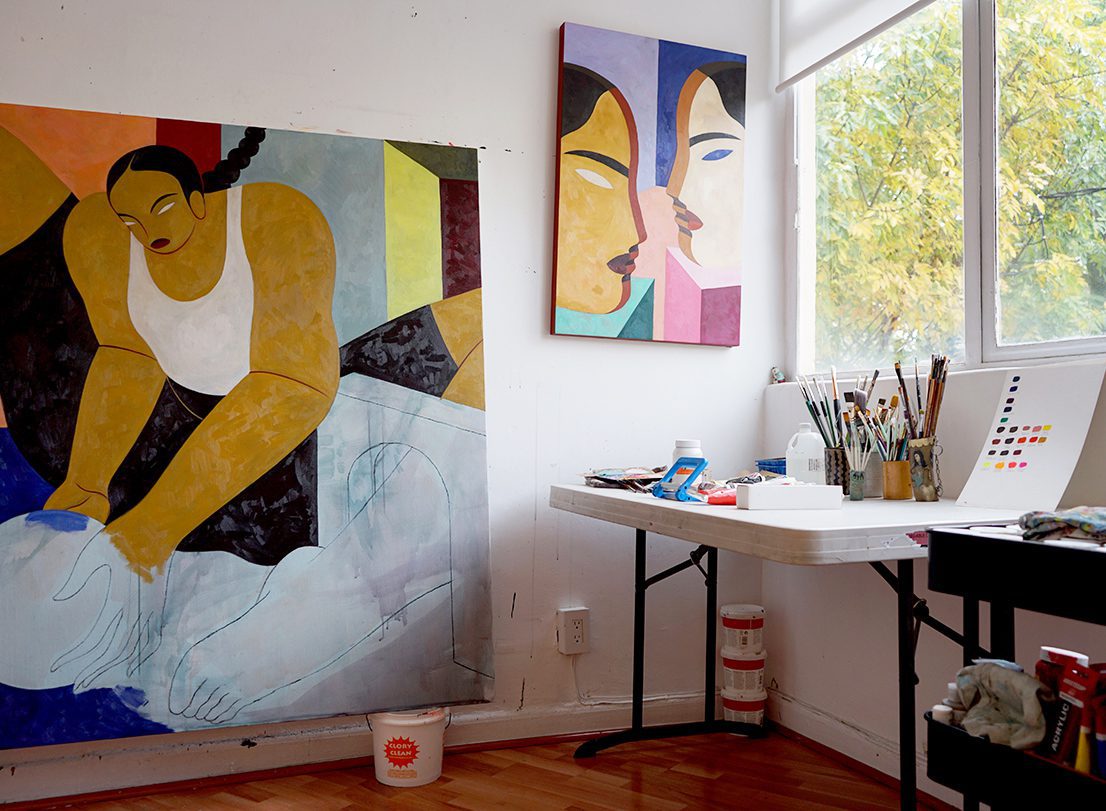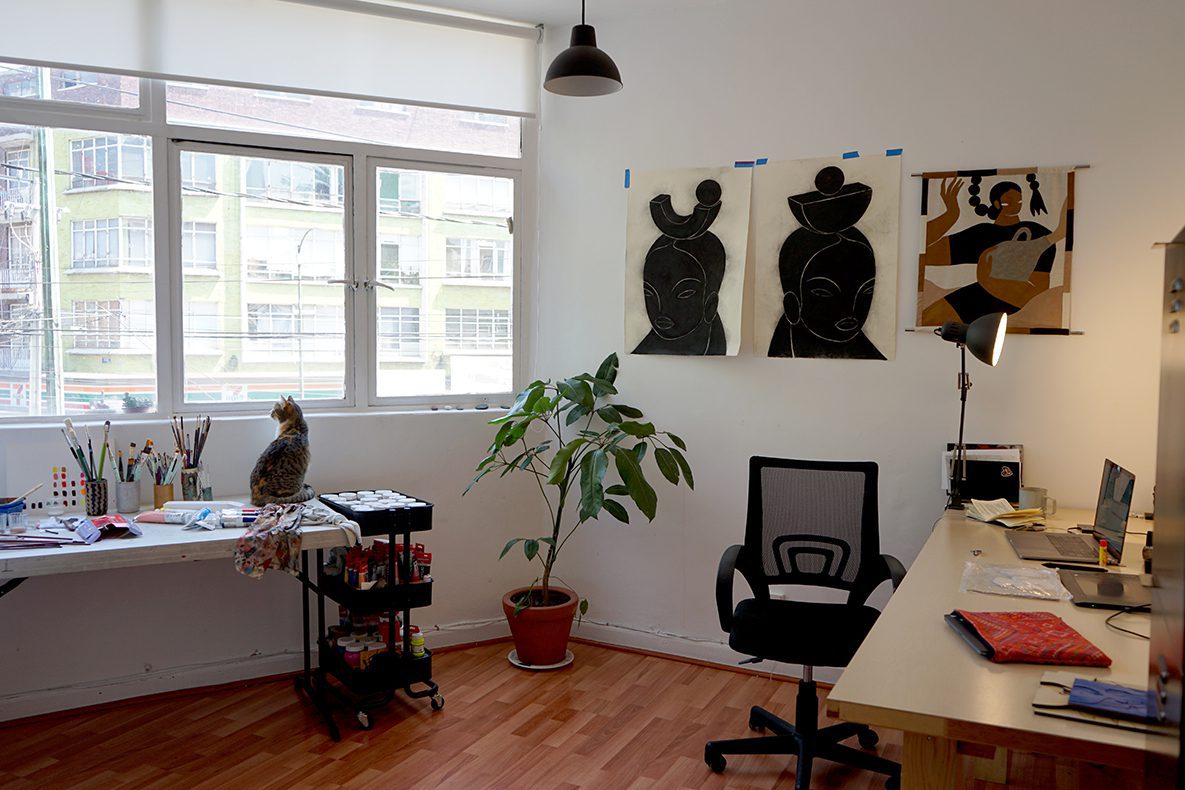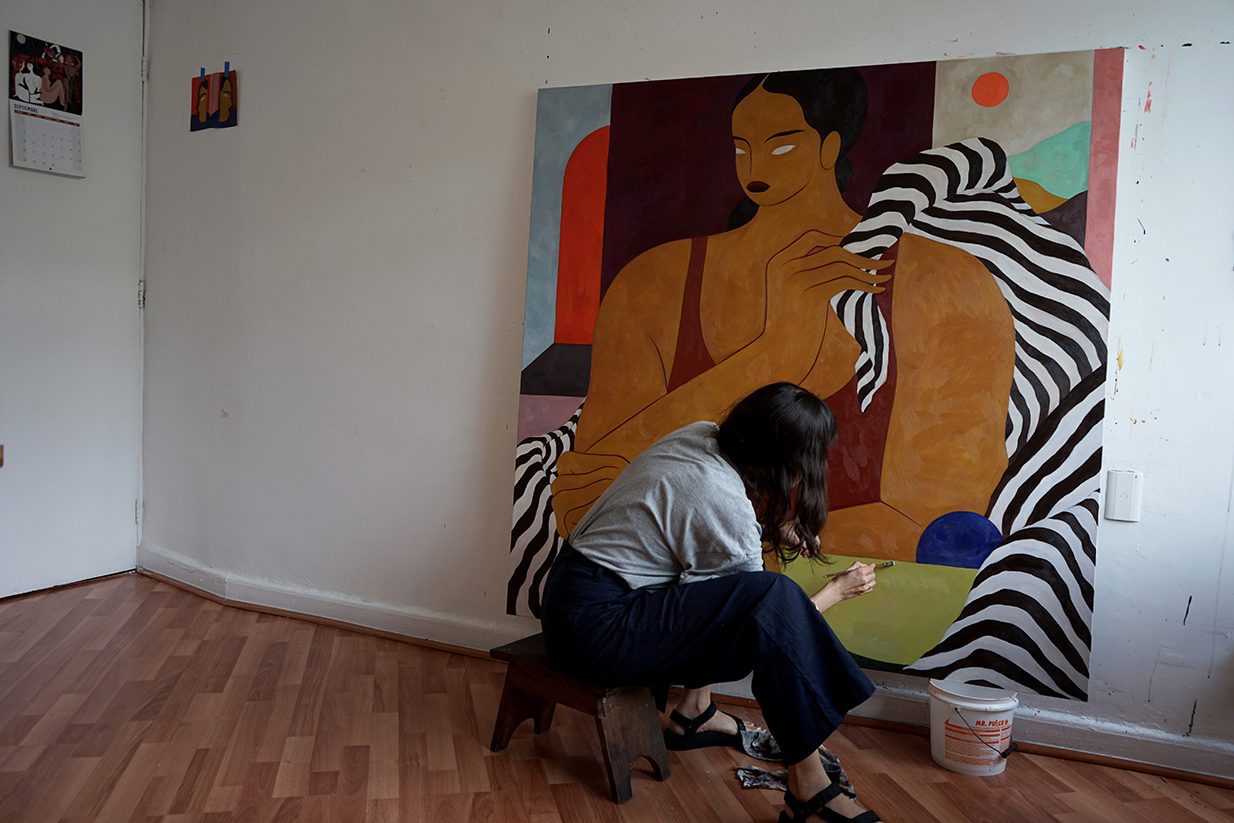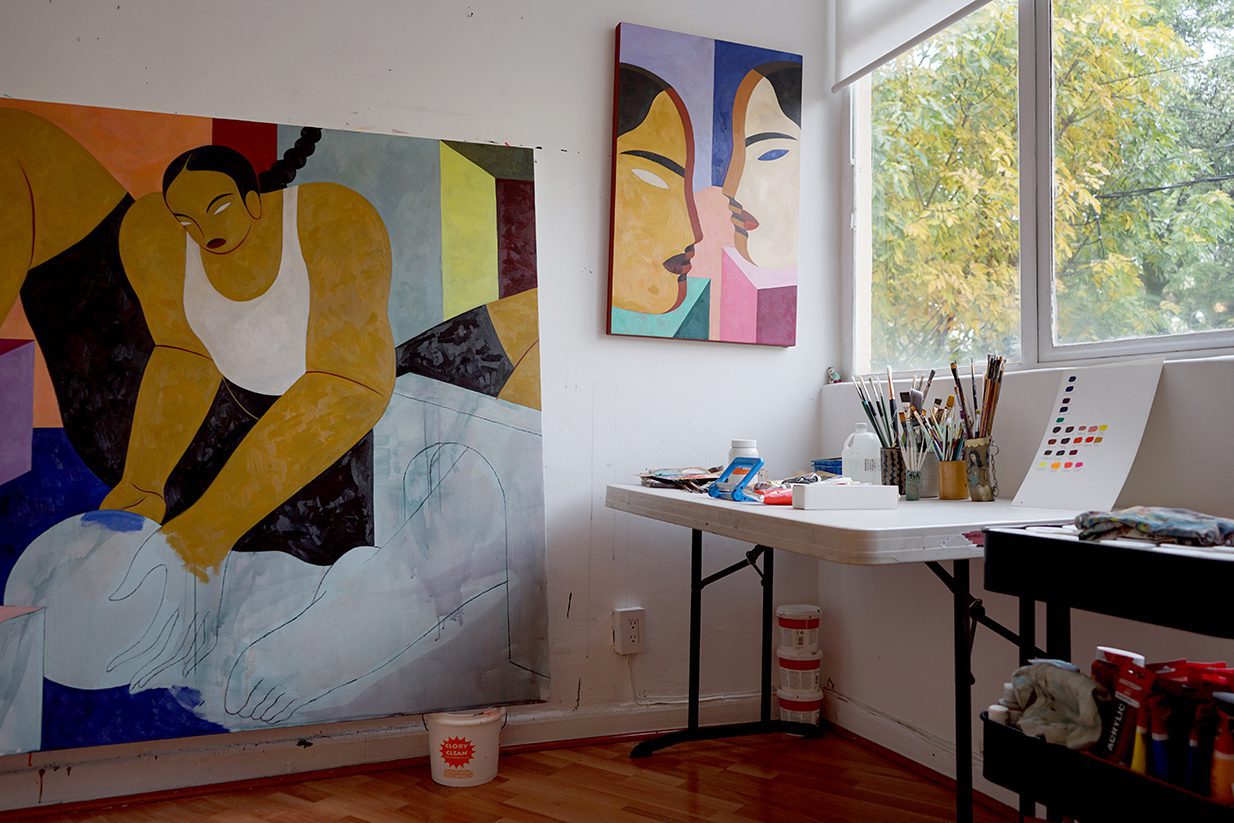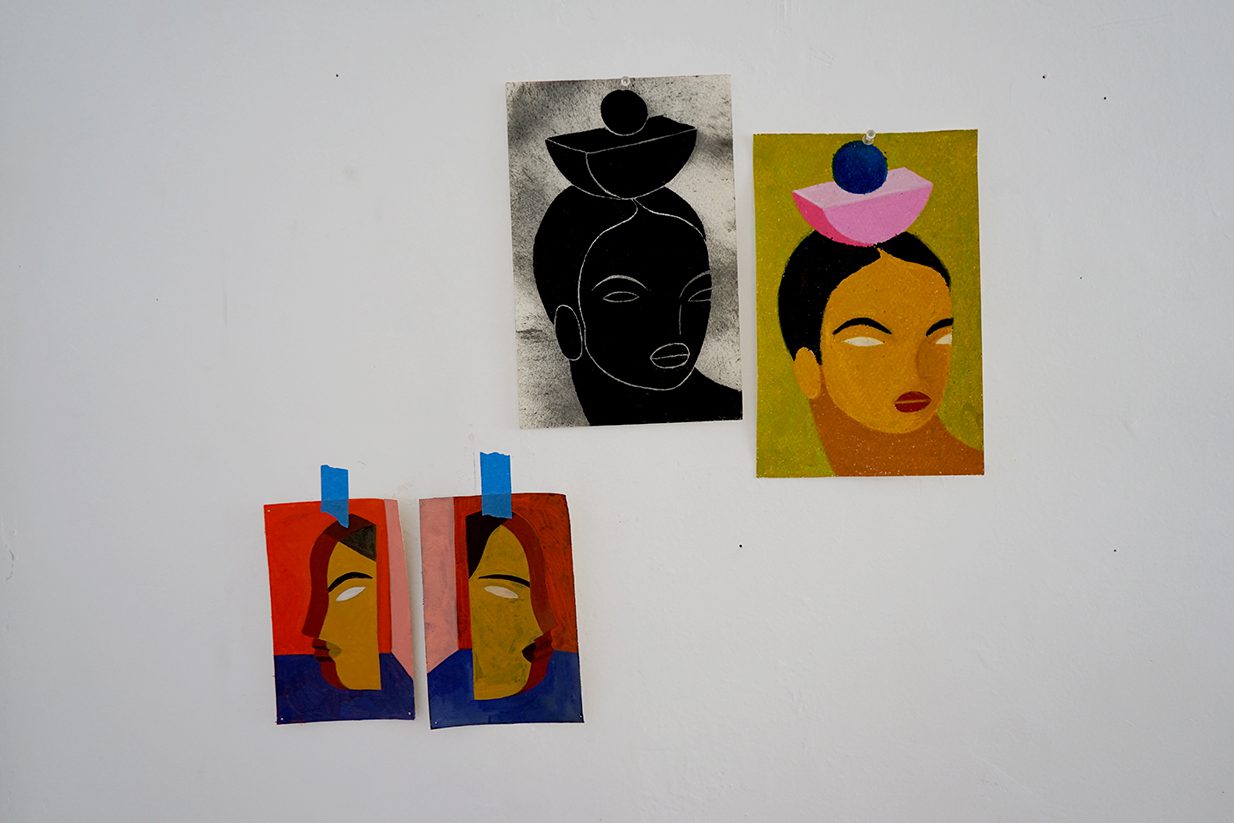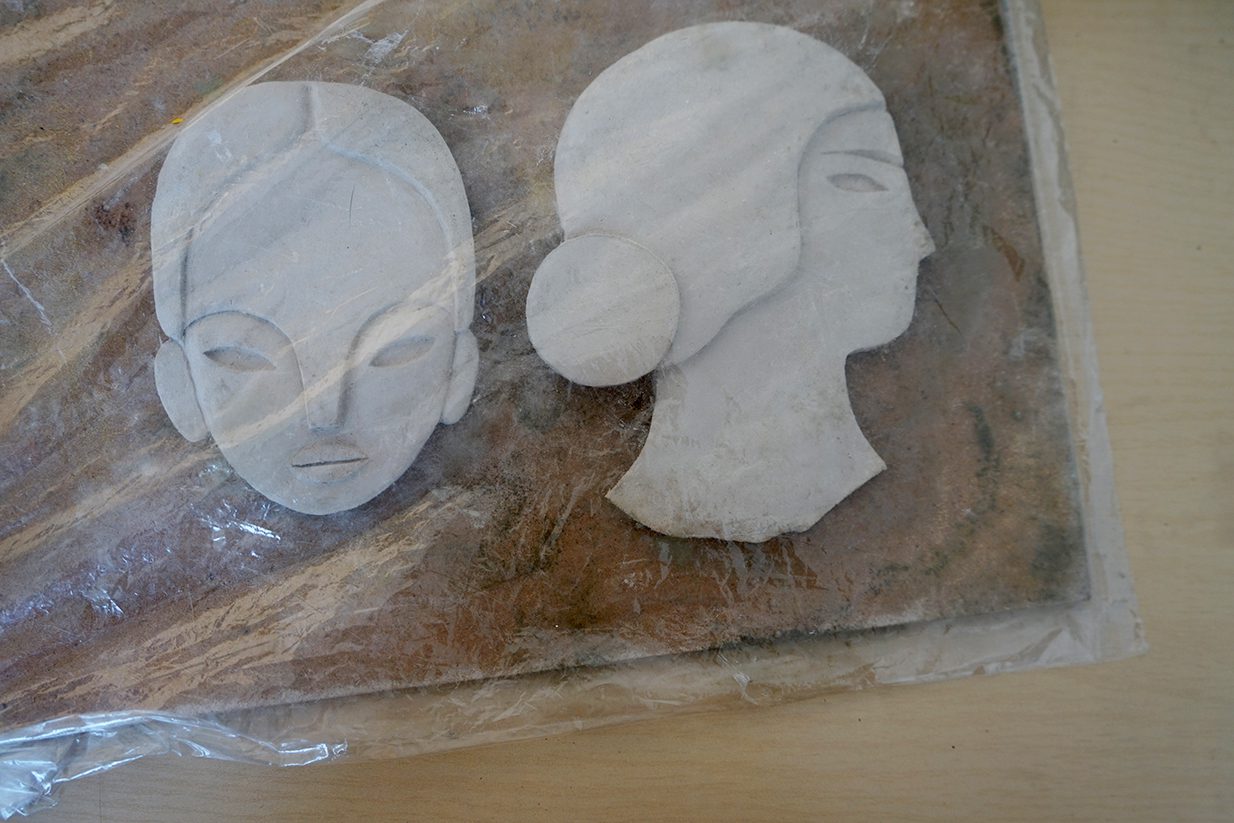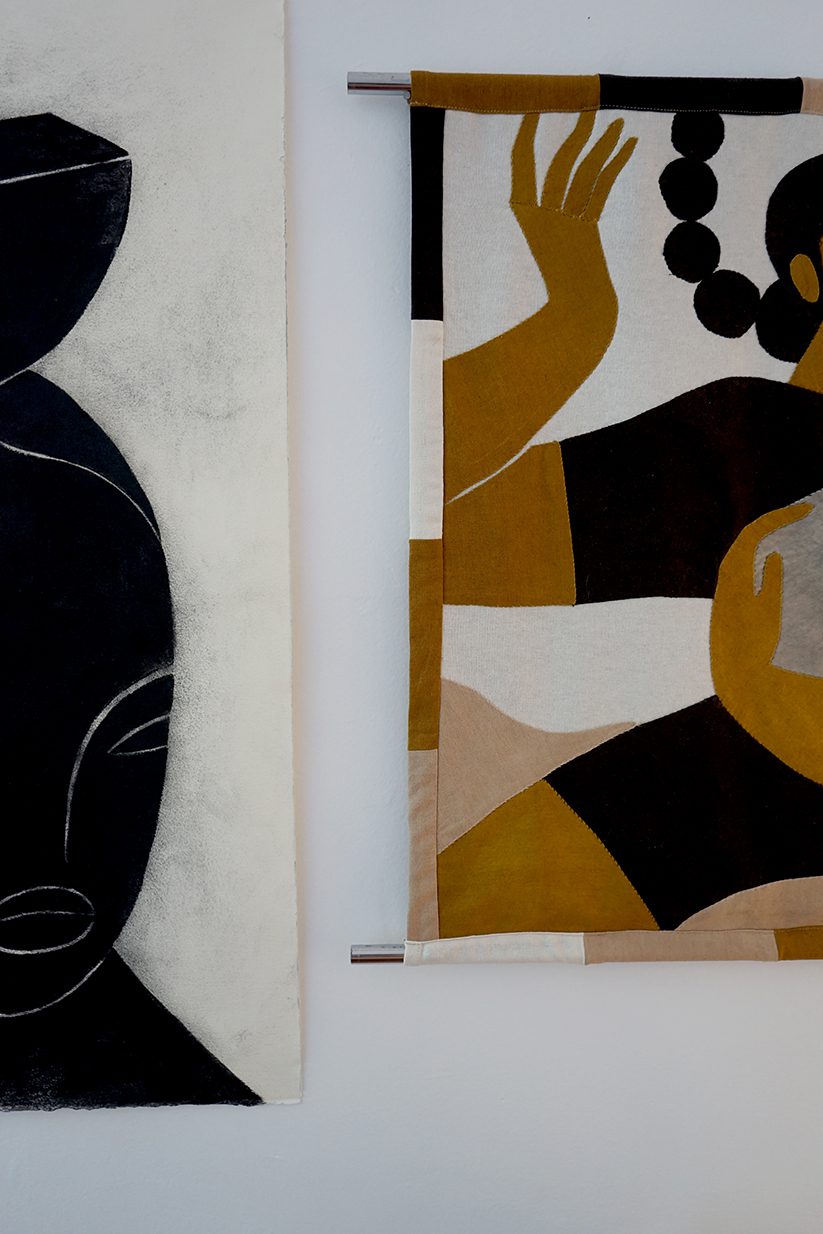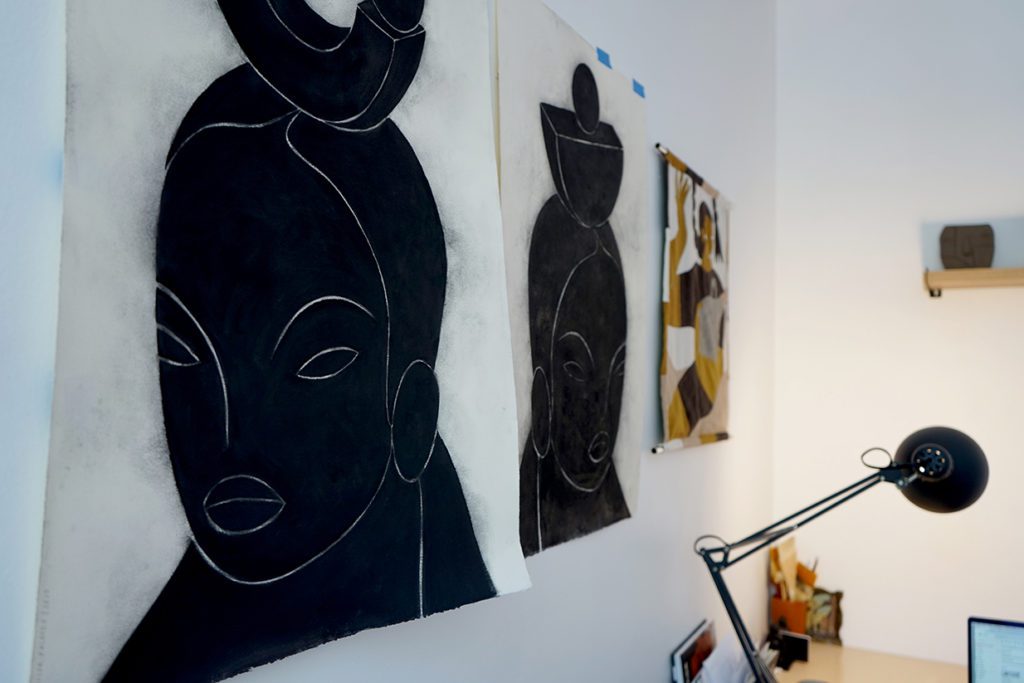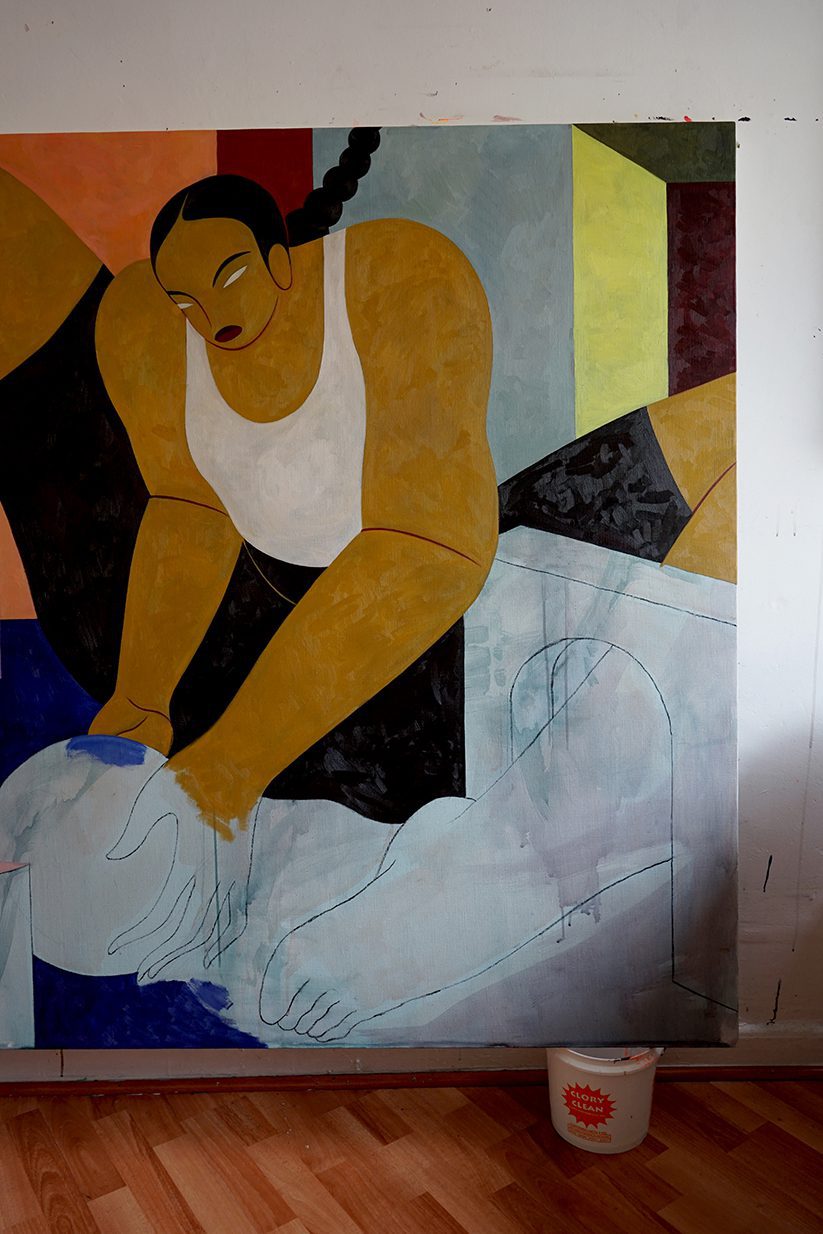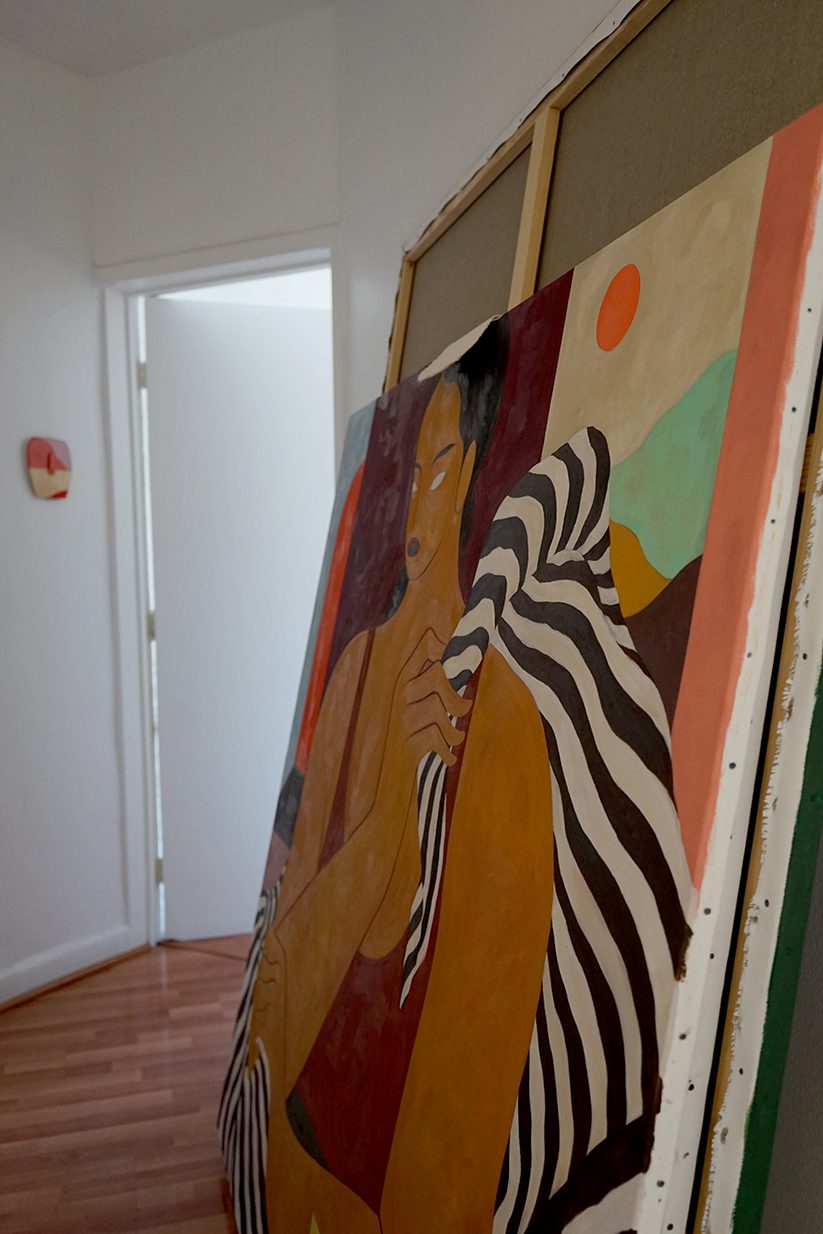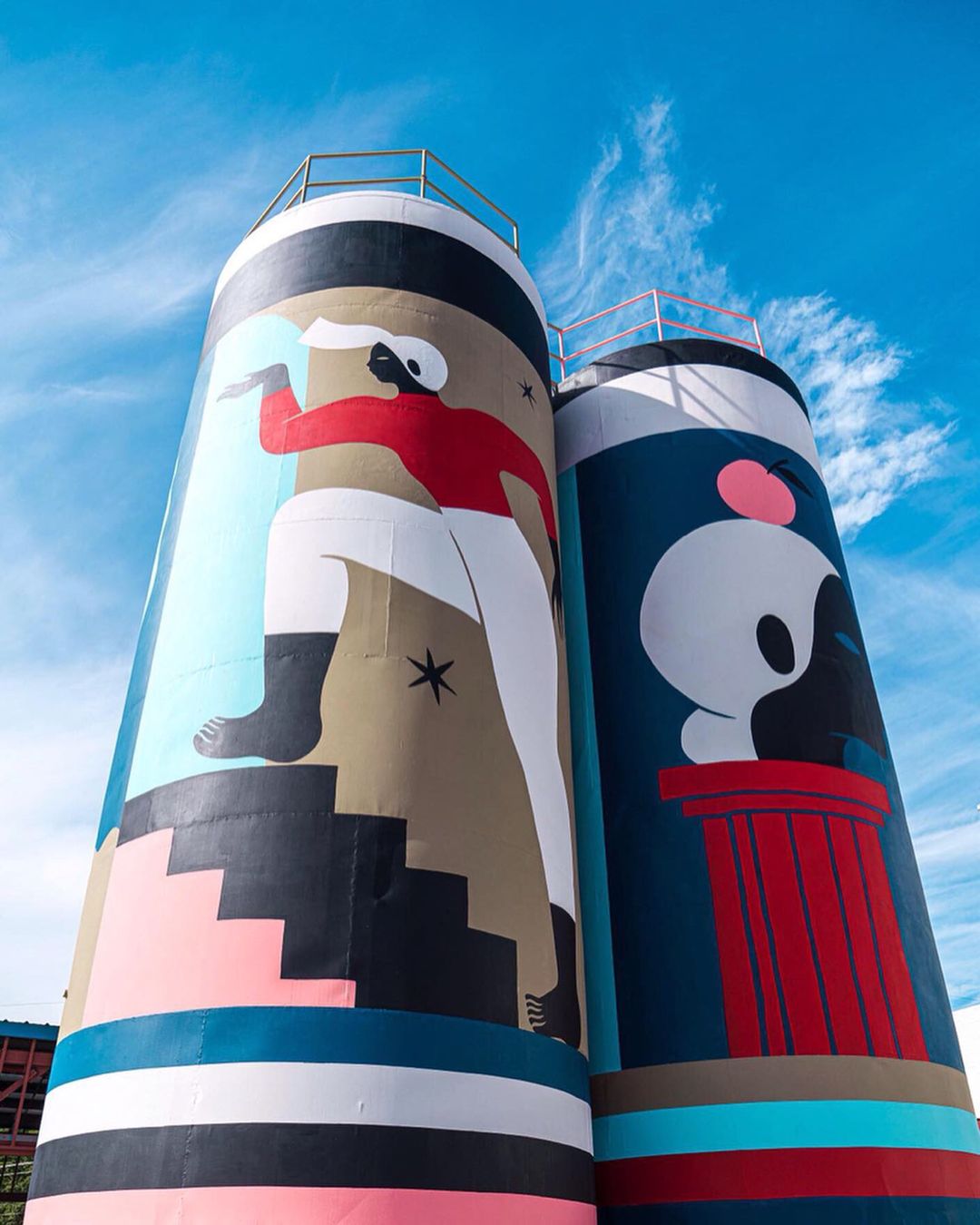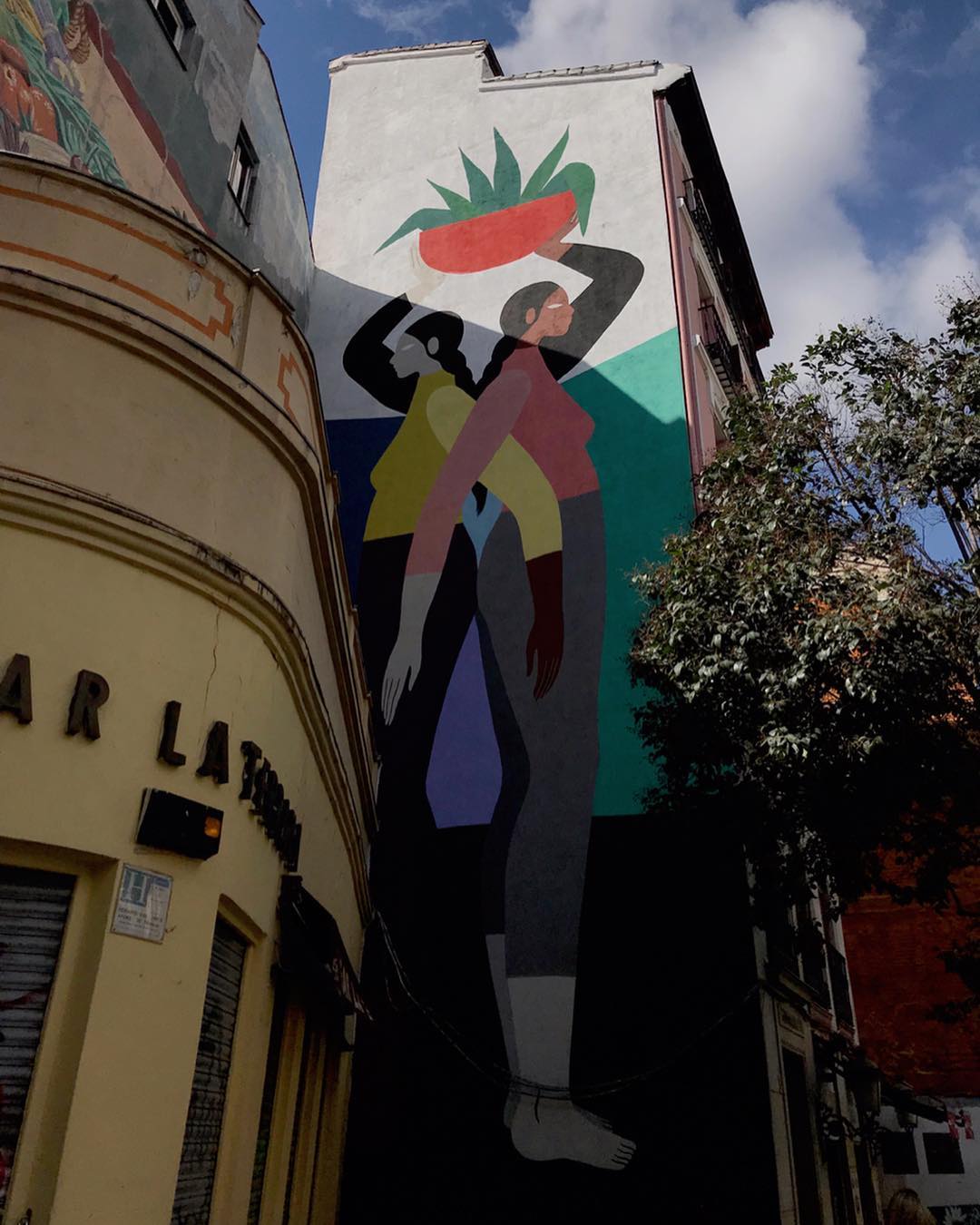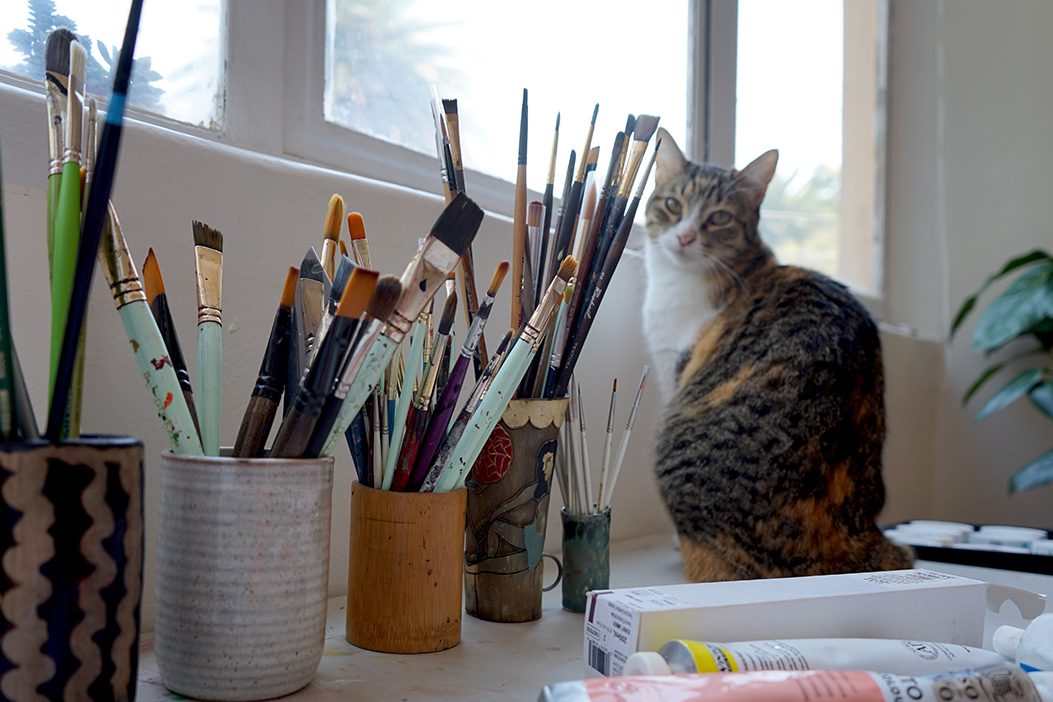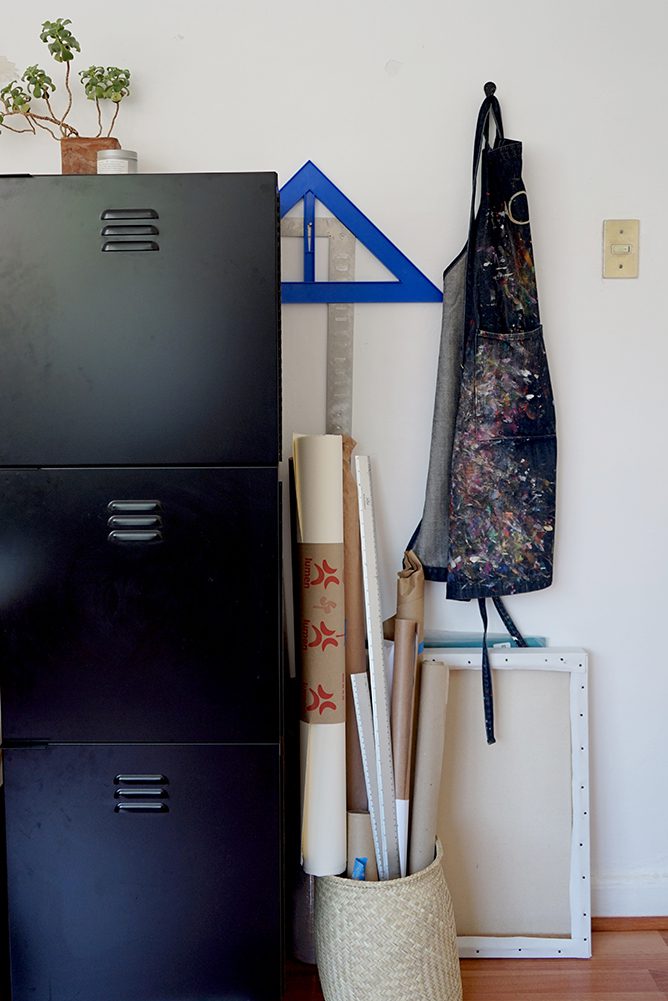Hilda Palafox (Mexico City, 1982) or Poni, her alter ego and the artistic name by which she is known, decided to leave her four-year job in advertising to make the leap into editorial illustration. But the leap took her much further. Today Hilda does large scale murals, illustrations, drawings, ceramics, paintings on textiles and in her studio she experiments on canvas and paper with oils, pastels or charcoals. There is little that resists her. In her work she speaks of feminism and femininity, in a way so natural that she arrived at it almost without looking for it, and which she now embraces in a language in which she expresses herself through large and imposing Mexican women’s bodies. From her studies in Graphic Design she has taken that heritage from a clean work, with defined lines and solid stains with a balanced use of color where less is more. Poni welcomes us to her bright home studio in Mexico City to show us her creative process, her most recent works, talk about women in the urban art environment and her upcoming (and indeed her first) exhibition in Mexico City, at Maia Contemporary space. To see the full live video you can click here.
Hilda Palafox’s (Poni) studio in Mexico City
Hilda at her studio
«My studio is a small room inside my house in a very familiar neighborhood. Now I’m working on these paintings for an exhibition at Maia Contemporary that was supposed to open on October 14th, but since everything is a little unstable, we moved it to November 14th. I am super excited that this will be my first solo exhibition in Mexico City. My studio is very small, what you see is what you get, but through this window I get a lot of light. I have my work table where I do all the digital and mail work and the wall is where I paint. A few months ago I had an exhibition in Los Angeles where I dared to make pieces a little larger than normal and I liked it a lot. When I saw the gallery where I exhibit now in Mexico I decided to continue in this line».
Left: oil wip painting. Right: oil artwork for her next exhibition at Maia Contemporary
Left: experimentation with different color paint base. Right: pastel paintings
Besides, I was just starting to work on some pieces with oil, experimenting with new textures
«I come from a graphic design school so my work has always been in the line of very clean things, where less is more and using very solid color stains. I really like to work with more abstract and not so literal symbols within the image and in a synthetic way. I recently began experimenting to paint with oils and I’m looking forward to explore some chaos within the harmony: I make very clean cuts but if you come closer you discover that small world of brushstrokes, the painter’s gesture. In my work with oil I follow that line of action. [In the first photo the picture on the right] is a test I did on wood and with acrylic I couldn’t get these textures… I really liked how it turned out so I’m going to present it to the exhibition as well. The large work [on the left] will also be part of the exhibition, it is in full process. You can still see the strokes and that first whitish layer that I give using very watery acrylic paint. I just do it so that I don’t paint on the white canvas and it takes on some more texture. I’m precisely testing the backgrounds I use on the base because depending on whether I use a white, black or orange base, the piece takes a different finish because of the lights [photo on the right, below]».
Models for her next ceramic 2D sculptures
Textile piece (right)
«Here I have the models of some pieces that I am going to make with a black clay artisan from Oaxaca [left photo]. This is the original mold and they will be two-dimensional, flat but with some volume. Usually the ceramic pieces are made by me in my studio and I love them but this year I haven’t had much time. It takes me a lot of work because I stick to the details… And then I realize that I have been working on the same piece for three weeks. I also work on textile pieces, two years ago I had an exhibition in Queretaro with Galería Balneario and it was the first time I worked with textiles, but at that time I made the sketch and a master loom artist in Oaxaca made it for me. Now I am working with a technique called ‘mola’, based on textiles from Colombia and Panama [right photo]. Speaking with a friend who is dedicated to textile treatment, she recommended using raw silk and I use natural pigments from flowers and plants to dye it. I sew the pieces by hand and if you come closer you can see the mistakes, I have to improve the technique».
Two charcoal pieces
«After making my first pencil sketch on paper I transfer the design to the iPad and so I get an idea of how the colors will harmonize, especially because sometimes I put a lot of different ones and as they are very frank stains, if there is a large and very small one I need to find the balance. It’s a game of weights and composition. But when I stand in front of the canvas many times the colors don’t fit as in the digital sketch so I rather play and make changes on the final piece itself. I usually use grids in the sketches to square the pieces that would after go on the canvas or the wall. My sketches are simple but I like very much to see that work in pencil with pure line. I am working precisely on some pieces in charcoal that I love because they are like a big black stain but it is the line, so synthetic and fine, that carries that strength. I try to make the line the most important thing and to play with the textures of this black, to look for the information within them».
«Ever since I started working with my Poni alter ego, or rather that ‘me’ I was looking for, I had this thing of drawing women in a super natural and organic way. I didn’t realize that it was starting to be perceived as a very strong female voice, one of empowerment… It was something that I wasn’t specifically looking for or rather I wasn’t looking to say it that way. I had it in my own voice, but I needed to find it. When you are born woman you already have all these things stuck in your head that you don’t even realize you want to say. It was later that I saw that I was throwing a very strong message in this direction and I embraced it in a more conscious way. I noticed that it was causing a reaction in people and more so now there are marches for women’s rights all the time, nobody stays quiet anymore and I try to pay more attention to the things that come out of me. I want my message to flow and come out on its own, without me trying to force it. I’m still me, my voice is feminist and it’s a woman’s voice in a time where there’s a big change going on and it’s impossible not to take it and embrace it».
Siles in Fort Smith
Wall painted in Madrid for Urvanity Art 2019
«The first mural I did was in Mexico City, I asked a guy I knew who handled these wall permits and within a week it was ready to go. I wanted to draw something in large format. That’s when I realized what it meant to paint in the street. When I started in this scene I remember that there were very few women’s names on the urban art festivals posters. That’s why I didn’t wait for someone to invite me, I moved on myself. When I participate I notice a very big male burden, everyone knows each other, it’s usually the same old names… And when you meet another woman you automatically make a big bond. I’ve been painting walls for four years now and I don’t have that much experience, but I’ve noticed that now there are more women invited, although sometimes I feel it a bit forced and that instead of inviting women because of our talent it’s because they need women’s names, you feel that commitment that they have to comply with these “new rules” of inclusion. Feeling like “the girl who was invited” did not make you feel part of the same group».
«I went to Japan for an artistic residency in 2018 and it has been one of the most interesting experiences I have had. I think that trip started to make a difference in what I was doing. I realized that when I was there people did not realize where I was coming from and I felt a little offended because I said, I am Mexican, I am very proud of it and I would like my work to reflect that more. A very inner change happened that was later reflected in my work. I decided to start making a different kind of silhouettes, the details of the women I draw, the color palettes I used… Although Mexico from the outside is perceived as a macho country, and it is, families are very matriarchal, it is the women who carry that authority. I changed those silhouettes for something that was more imposing, stronger, more weight and volume, that everyone could see themselves represented, especially women».

